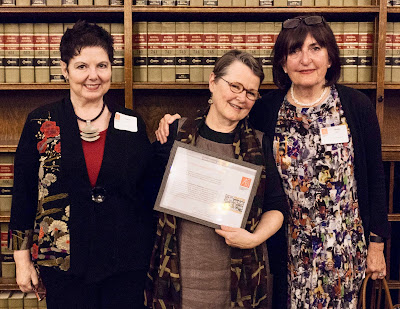As for 2018, here are some things to watch for.
The Trudeau government’s reaction to the ENVI report
The report of the Committee on Environment and Sustainable Development came down on December 8. Minister McKenna has 120 days to respond.
The report is a strong one and contains a set of 17 excellent recommendations for government action. There is no reason the government should not move on all of them.
The National Trust for Canada, which is leading on the file, isn’t idly counting down until April. It has written a letter to the Minister, to be endorsed by umpteen heritage sector organizations across the country, identifying a number of priorities that can be acted upon quickly and urging that the 2018 federal budget include measures that will encourage investment in the revitalization of historic places (particularly tax-based incentives and grants/contributions). The letter also requests a meeting with the Minister to discuss and assist.
The government has a once-in-a-generation opportunity here. Will they take it?
Rollout of changes to the OMB
Every one interested in planning and heritage is watching — and wondering — how this will play out.
Bill 139, which (among other things) converts the Ontario Municipal Board to the Local Planning Appeals Tribunal and makes changes to its scope and powers, received royal assent last month. By my analysis there is less here than meets the eye, but there will be real implications for our planning appeal system, even if these are more than a little unclear at this point.
While the legislation is a done deal, it’s not yet in force. The changes come into effect “on a day to be named by proclamation of the Lieutenant Governor.” Having legislation take effect on proclamation is done to give the government time to put the needed administrative infrastructure in place. For example, Bill 139 creates a new agency, the Local Planning Appeal Support Centre, which will provide support services (including information on land use planning, guidance on tribunal procedures, and advice or representation) with respect to Planning Act matters under the jurisdiction of the OMB/Local Planning Appeals Tribunal. This agency will have to be set up.
Apparently there has been a great surge in planning applications by those anxious to get in under the wire and have their applications considered under the current system. The government has set rules for the transition. [1]
The new system is supposed to be in place by the spring. Given the transition rules it is unlikely the first appeals will be heard by the LPAT until late in the year. So we won’t get a sense how this is really working until 2019.
Heritage as an issue in provincial and municipal elections
The question is really whether heritage will — or won’t — be an issue in the 2018 elections at the provincial and local levels. The answer may depend on people like you.
What questions would you put to the candidates?
Also on my radar for 2018 will be:
- the results of the efforts, led by Mohawk College instructor and old windows champion Shannon Kyles, to get the province to change its energy conservation incentive programs to include the restoration of existing window and doors,
- the Ministry of Tourism, Culture and Sport’s long-awaited new guide to heritage resources in the land use planning process, and
- new appointments to the Conservation Review Board.
 |
| Shannon Kyles, drill in hand |
Note 1: The rules are:
- appeals that are already before the OMB as of the date of Royal Assent (December 12) would be subject to the existing rules and would be heard by the Ontario Municipal Board
- appeals made after the new rules are proclaimed into force (date unknown at this point — likely April) would be subject to the new rules and heard by the new Local Planning Appeal Tribunal
- appeals of matters between the date of Royal Assent and the date that the new rules are proclaimed:
- would be heard by the Ontario Municipal Board if the planning matter began (e.g. the complete application was received) before the date of Royal Assent; and
- would be heard by the Local Planning Appeal Tribunal if the planning matter began after the date of Royal Assent.












